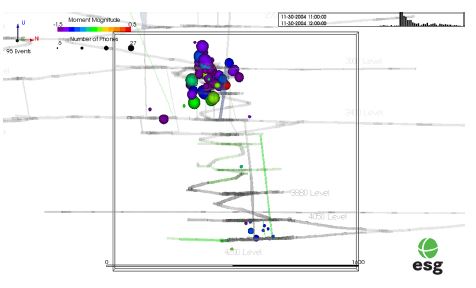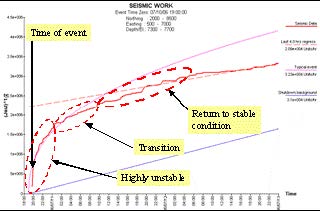
In operation for over a century, Creighton mine in Sudbury, Ontario has a long history of stress-induced and structurally generated seismic activities. A microseismic monitoring system is used to manage seismic hazards, improve worker safety and enhance productivity following rockburst events.
Currently operated by Vale Inco Limited, Creighton nickel mine in Sudbury, Ontario is Canada’s deepest mine. In operation since 1901, Creighton mine has a long history of rockburst events due to the geological structure of the mine. The microseismic monitoring system was expanded in 1999 to monitor mine-wide operations and provide insight into rockburst re-entry conditions, thus playing a significant role in the management of hazard and risk associated with deep mine operation.
Background
Mining activity has taken place at the Creighton mine for over a century, using a variety of methods to extract the various orebodies. Currently, vertical retreat and slot-and-slash bulk mining is the preferred method.
Creighton mine is located in the sourtheastern corner of the Sudbury Igneous complex and is characterized by a number of late-stage faults and shear zones. While the Creighton mine has developed methods to successfully manage the stress-induced seismicity surrounding excavations, managing major seismic activities caused by discrete geological structures resulting from stress changes remains a challenge.
ESG Solution
Microseismic monitoring systems have been used at Creighton mine to observe mine seismicity since 1980. Currently, Creighton mine operates a 104-channel ESG Hyperion system consisting of uniaxial and triaxial accelerometers. Additionally, a separate 24-bit ESG Paladin™ system is used to detect larger magnitude events.
Creighton mine implemented a process for evacuating mine areas following a rockburst event or large production blast, using ESG’s large event monitoring software SeisWatch™ to observe seismic activity and isolate areas of safety concern for mine workers.
Several key parameters are monitored, and give an indication of how quickly seismicity in certain zones is decaying to background levels. For example, seismic work is derived from the seismic moment (M0) and gives an indication of the rate of seismic event generation. High numbers of events are characterized by non-linear slope, while linear slopes indicate a return to background conditions.
Clustering indicates the dispersion of events throughout the mine, and typically reaches a maximum following the rockburst before decaying to background levels. Other parameters which are monitored include seismic strain rate, event decay rate and event histograms by level.
Microseismic monitoring and the implementation of a rockburst re-entry protocol play a significant role in helping mine operators maintain the exemplary safety record of Creighton mine, despite being one of Canada’s deepest and most burst prone mines.








